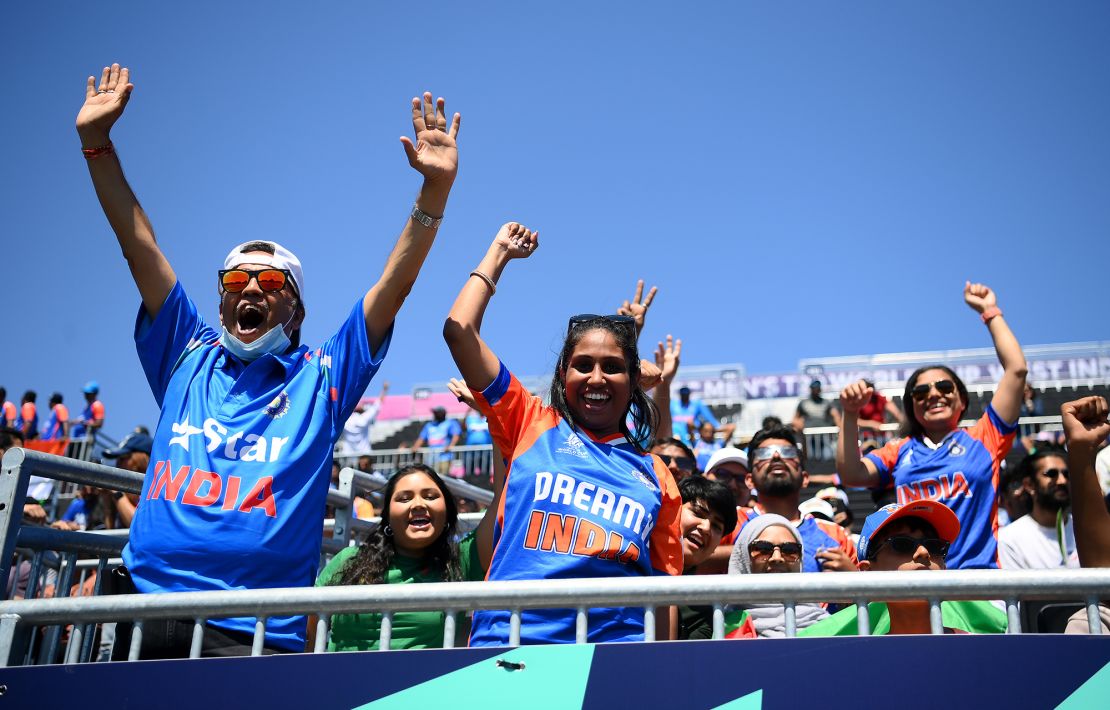Editor’s Note: Ashish Ravinran is a Singaporean-Indian writer and filmmaker based in New York City. His upcoming feature documentary, “Chasing Cricket,” follows the story of immigrant teens playing in an NYPD-run cricket league. He tweets at @AshishRavinran. The views expressed in this commentary are his own. Read more CNN Opinion.
For one morning on June 9, 2024, the eyes of the cricketing world will fall on a public park on Long Island, New York. India and Pakistan will take on each other in the Men’s T20 World Cup. Don’t worry. Tickets are still available for a mere $2,500 to $10,000 (other matches start at $200).

Just as cricket is the second most-watched sport in the world, India-Pakistan matches are some of the most-viewed sporting events globally. But there’s much more to cricket in America than the India-Pakistan rivalry.
The fact that the US is co-hosting the World Cup for the first time, with the Caribbean, should be seen as a coming-of-age for what has been a neglected sport here.
Now the cricket world wants to know: Is the sport settling in for a long stay at the crease, or is this just a flashy little cameo? In other words, can cricket ever take root in mainstream America?
Beyond the glamor of this international tournament and cricket officialdom, there is another America; one where cricket has been thriving organically for years, nurtured by South Asian and Caribbean immigrants.
When I moved to New York in 2012, I didn’t expect to find much cricket here. My own cricket career peaked when I represented Singapore at the Under-13 level and ended after a forgettable stint for my Oxford college.
But I soon realized that one of the unexpected pleasures of cricket in America was seeing the sport bloom between the cracks. I met groups of brown and Black immigrant teens who’d been separated from their greatest passion but found ingenious ways to play it: on pot-holed, trash-strewn fields, in public parks and empty parking lots.
I realized I had a lot in common with these teens. Growing up as a diasporic Indian kid in Chinese-majority Singapore, cricket gave me a sense of identity and connection to my Indian heritage. Cricket has fared better in Singapore than in the US, though it’s nowhere as popular there as say, soccer or rugby.
In Singapore, cricket training was where the brown kids often found each other, and where I found the vast cricket universe, complete with its own myths, heroes, laws and language. Silly mid-off? Fine leg?
Years later, I saw cricket providing a similar sense of identity for these teens in New York. It was a connection to their lives back home, and to the new ones they were forging in New York. “Cricket here is not just a sport. It’s a way for me to hold on to my culture while finding a community I can rely on,” Tanvir Ahmed, a young Bangladeshi cricketer based in Brooklyn, told me.
Through their eyes, the New York cricket world continued to bloom in front of me. I discovered weekend leagues, a high school league and peculiarly, the NYPD Youth Cricket League — the subject of my upcoming feature documentary.
Past the US Open tennis courts and the Citi Field baseball stadium, in a small section of Corona Park, Queens, the NYPD has been organizing a youth summer cricket league since 2008. Created to rebuild trust with the Muslim community after 9/11, the league became a surprise hit due to pent-up demand amongst immigrant teens, desperate to play their favorite sport in a country that cared little for it.
The American cricket community, who’ve been slogging uphill for years, are seeing progress in other parts of the country, too. Last year, Grand Prairie in Texas and Morrisville in North Carolina co-hosted the inaugural Major League Cricket season. This year there’s a second competition, the National Cricket League, headquartered in Dallas, home to a large South Asian community.
Elsewhere, university teams filled with international students have played in the American College Cricket league since 2008. And Fort Lauderhill in Florida, with its large Guyanese, Trinidadian and Jamaican expat population, has hosted three India-West Indies series since 2016.

Still, cricket remains an oddity to most Americans. Cricket lovers here are often forced onto the back foot when trying to explain it. We’re tempted to invoke the game’s longer history in the US, the well-known immigrant refrain of “we’ve been here longer than you think.”
Sports journalists have joined our voices this week, reminding readers that the first international cricket match took place in New York between the US and Canada in 1844. We fans lament that cricket was played widely until, during the Civil War, it was defeated by baseball, its own protégé.
We simplify the game’s intricacies, hoping to be accepted, to be understood. I admit I’ve told Americans some version of the following: Cricket is baseball’s more excitable, older cousin, in which the bowler hurls the ball against the ground on its way to the batter, who then scores runs by sprinting back and forth in straight lines, rather than around a diamond.
And then there’s T20 cricket, the shortest version of the game designed for big hits and the format for the World Cup happening this June. “It doesn’t last 5 days! T20 takes 3 hours!” we diehards insist.
But if cricket is, in Indian historian and intellectual Ramachandra Guha’s words, the most “subtle and sophisticated game known to humankind,” what chance of mass appeal does it have in the land of slam dunks and the Super Bowl?
Quite a bit, the World Cup organizers hope. The US is “a massive market… and part of the objective is to grow the sport”, said tournament director Fawwaz Baksh. They’ve enlisted some big names to their cause. Usain Bolt is a tournament ambassador. Sean Paul sang the theme song. Local news teams have marveled at the temporary, purpose-built 34,000-person stadium in Eisenhower Park, Long Island — after backlash forced it to move from its originally proposed Bronx location.
In Manhattan, live screenings of World Cup matches are taking place next to One World Trade Center, where a fan zone has been built. Giant 400-pound, eight-foot tall replicas of the official T20 World Cup cricket ball have landed in Times Square, Dallas and the Greater Fort Lauderdale area.
Get our free weekly newsletter
- Sign up for CNN Opinion’s newsletter.
- Join us on Twitter and Facebook
At the Bangladesh vs. India warm-up last Saturday, the first match played in the brand-new Long Island stadium, the crowd was unsurprisingly mostly South Asian. But I did see ‘cricketing America’ and ‘mainstream America’ co-exist briefly.
Two Bangladeshi brothers admitted to me there that they’d signed up for stadium security jobs so they could watch their country play on US soil for the first time — for free! On the other hand, a solitary Yankees fan at his first cricket match, was telling people he hoped the next game he attends would be more of a nail-biter.
Although cricket will officially be part of the 2028 Los Angeles Olympics, it’s no shock that winning over America at large will be tough. Meanwhile, the initial public ballot for the India-Pakistan match was “more than 200 times over-subscribed,” according to organizers, and there were over 6 million ticket requests for the tournament.
It remains to be seen how many new converts will be found among the cricket faithful who are flocking to stadiums in Texas, Florida and New York this summer.
But after facing years of head-scratching and raised eyebrows in the US, this June the cricket diaspora strikes back.
